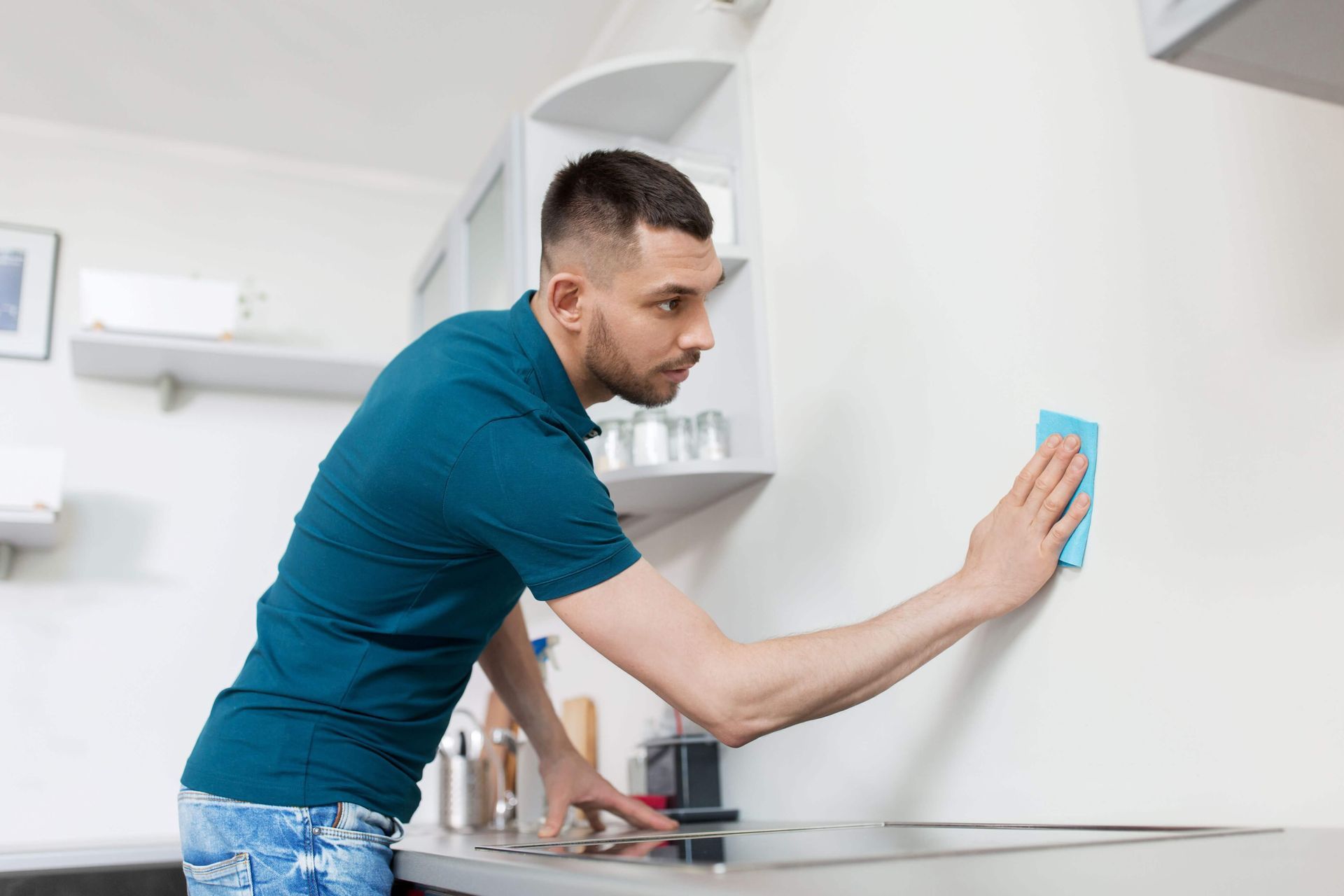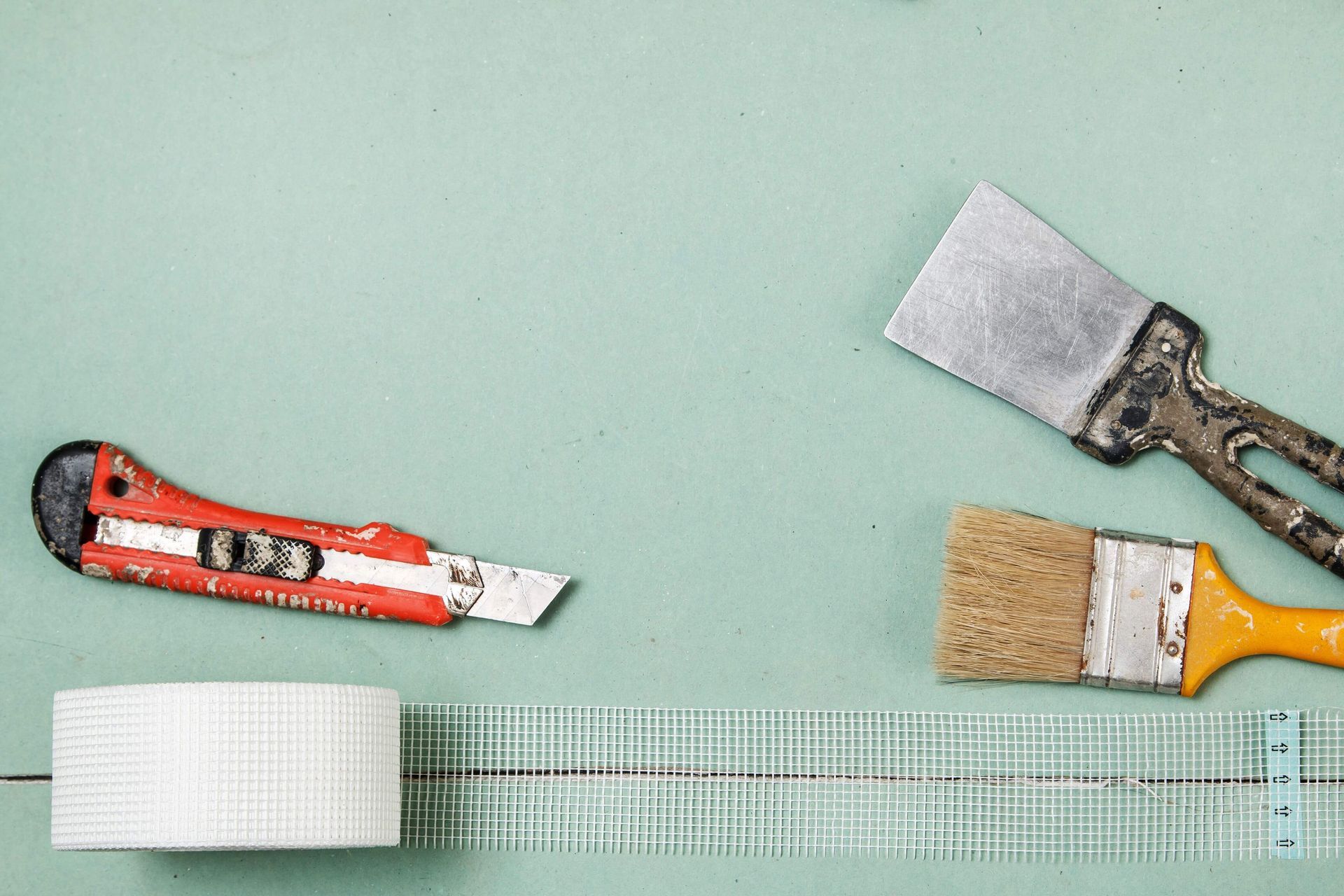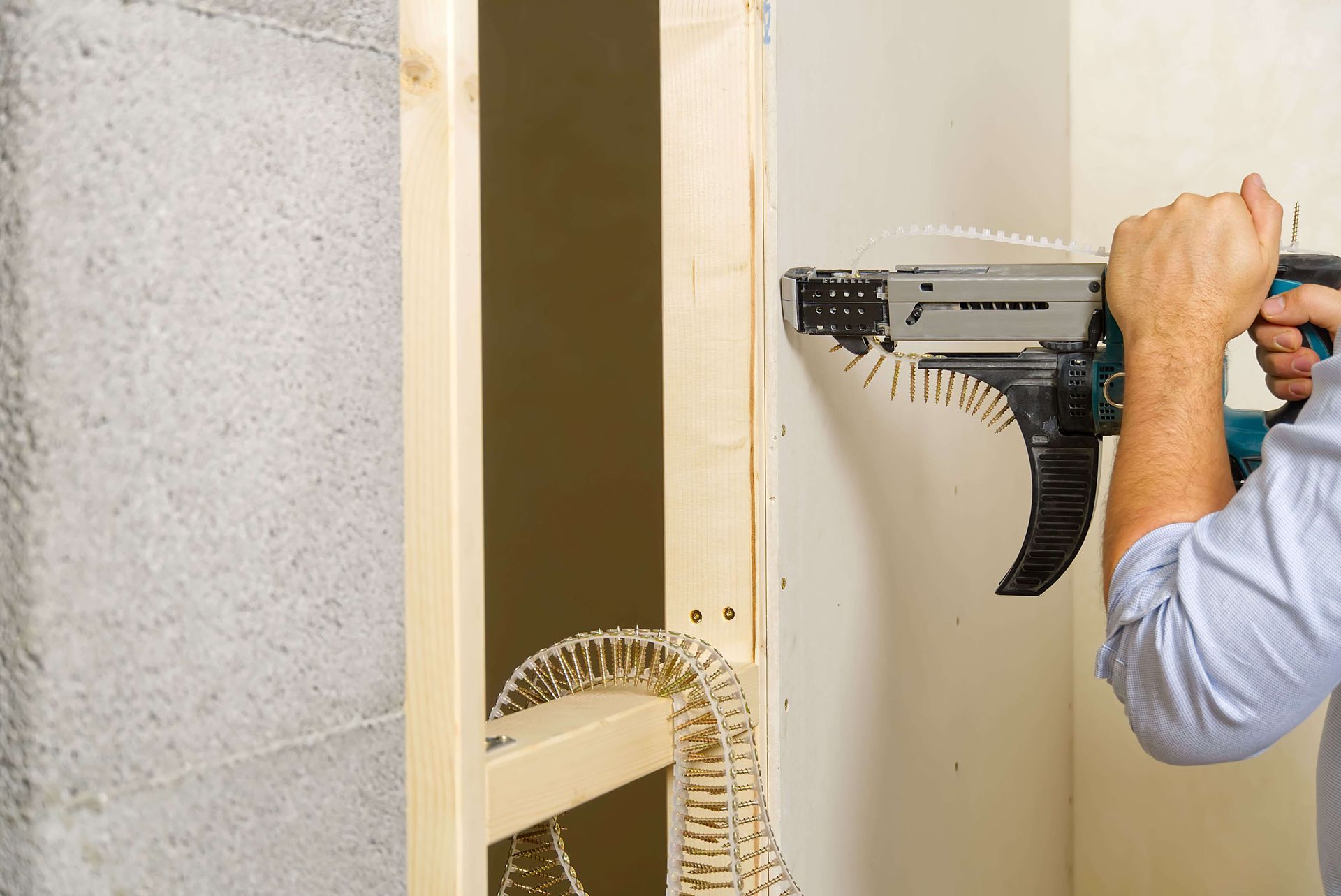Maintaining Your Drywall: Tips for Longevity and Durability
Tips for Longevity and Durability for your new Drywall

Maintaining your drywall is essential for ensuring it lasts for years to come. Drywall is a popular choice for interior walls and ceilings due to its affordability and easy installation. However, it can be prone to damage over time if it is not properly cared for. Poor quality drywall, inadequate ventilation, and other environmental factors can lead to deterioration, which can cost you in both time and money. In this blog post, we’ll cover the causes of drywall damage, necessary regular maintenance, and the importance of professional maintenance. We’ll also provide some tips for keeping your drywall looking great and lasting longer. With these tips, you’ll be able to enjoy your drywall for years to come.
Causes of Drywall Damage
Drywall is a common material used in many homes and businesses to create walls and ceilings. It is strong and durable, but it can be damaged by a variety of factors. Understanding the causes of drywall damage can help you take steps to prevent it and prolong the life of your walls.Moisture is one of the most common causes of drywall damage. Water can seep into the drywall, causing it to swell and eventually degrade. Leaky pipes, flooding, and high humidity can all lead to moisture-related damage to your drywall. You should take steps to ensure your home or business is properly sealed and insulated to prevent moisture from getting into the drywall.Physical damage is another common cause of drywall damage. Impact from furniture, pets, and toys can all cause cracks and holes in drywall. You should be mindful of where you place furniture and objects in your home or business to reduce the risk of accidental damage. Additionally, you should be aware of any areas where water or other liquids may have been spilled, as this could cause the drywall to weaken over time and become more susceptible to damage.Poor installation is another potential cause of drywall damage. If not installed correctly, drywall can become loose and even fall off the wall. Additionally, improper installation can lead to gaps and cracks in the drywall, which can let moisture and other contaminants into the wall. To ensure your drywall is installed correctly, you should hire a professional to do the job.Finally, drywall can become damaged due to age. Over time, the material can become brittle and weak, making it more susceptible to damage. Regular maintenance and repairs can help prolong the life of your drywall, but eventually, it will need to be replaced.
Moisture
Moisture is one of the most common causes of drywall damage and is the leading cause of drywall failure. Moisture can come from a variety of sources, including plumbing leaks, condensation, rain, and even humidity. Moisture can cause drywall to swell, crack, warp, and even rot. It can also cause paint to bubble and peel. In order to prevent moisture damage, it is important to keep the area around your drywall as dry as possible. This means making sure that any plumbing or water lines are properly sealed, that any water leaks are promptly repaired, and that any condensation is addressed. Additionally, it is important to ensure that the drywall is not exposed to too much moisture. This can be done by using a dehumidifier in humid areas, using a fan to circulate air, and making sure that the drywall is not subjected to excessive moisture for long periods of time. It is also important to use a moisture-resistant paint on your drywall, as this will help to prevent moisture from seeping in and causing drywall damage.
Physical Damage
Physical damage to drywall can be caused by many things, from a heavy object falling on the wall to a child drawing on it with a marker. In any case, physical damage can be more devastating than moisture damage, and can be harder to repair. In some cases, physical damage can result in a hole in the drywall. If this happens, it's important to repair the hole as soon as possible to prevent further damage. The most common way to repair a hole in drywall is to cut out the damaged area and replace it with a new piece of drywall, secured with drywall screws. In other cases, physical damage may not result in a hole, but may instead cause cracks or dents in the drywall. In these cases, it's important to repair the cracks or dents as soon as possible, as they can lead to further damage if left unchecked. The most common way to repair cracks or dents in drywall is to use joint compound to fill in the cracks and smooth out the surface.In addition to repairs, it's important to take preventative measures to help protect against physical damage. For example, you can use corner guards or wall bumpers in areas where furniture or other objects might come into contact with the wall. Finally, it's important to keep an eye out for any physical damage that may occur, and to repair it as soon as possible. This will help ensure that your drywall is kept in good condition for years to come.
Poor Installation
Poor installation of drywall can be a major contributor to damage and decreased longevity. It is important to ensure drywall is installed correctly in order to minimize the risk of future damage.Incorrectly installing drywall can cause a number of problems. Improper measurements or incorrectly cut pieces of drywall can lead to gaps in the wall that can cause water to seep in and damage the drywall. Additionally, drywall that is not hung correctly can be susceptible to cracking or shifting due to changes in temperature or humidity.The most common mistakes made when installing drywall are not measuring correctly, not using the correct tools, and not using the correct fasteners. When measuring for drywall, be sure to measure twice and cut once. Additionally, make sure to use the appropriate tools, such as a tape measure, level, and utility knife, and make sure to use the correct fasteners, such as drywall screws or nails.When hanging drywall, make sure to use the correct spacing and alignment. Drywall should be hung with a minimum of 1/8" space between the boards. Additionally, make sure to align the seams of the drywall, so that the seams do not line up between two sheets of drywall.It is also important to use the correct finishing materials when installing drywall. Make sure to use a thin-set mortar or drywall compound to cover the seams and screws, and to fill any holes. Additionally, make sure to use the appropriate corner bead and tape to finish the edges.Finally, it is important to make sure the drywall is properly sealed. Make sure to use a sealant or primer to protect the drywall from moisture and other damage.Taking the time to properly install drywall is the best way to ensure its longevity and durability. By taking the time to measure and cut correctly, use the right tools and fasteners, and finish with the appropriate materials, you can help ensure the drywall will last for years.
Regular Maintenance
The best way to ensure the longevity and durability of your drywall is to maintain it regularly. Doing so will help to protect it from damage, and can help to extend its life significantly. Regular cleaning is an important part of drywall maintenance. Dust and dirt can accumulate on the walls over time, which can eventually lead to damage and staining. To prevent this from happening, it is important to regularly wipe down the walls with a damp cloth and mild detergent. This will help to remove any dirt and grime that has settled onto the surface. If you notice any cracks or holes in your drywall, it is important to repair them as soon as possible. Small cracks and holes can be filled with spackle or joint compound, while larger ones may need to be patched up with a patch kit. Doing so will help to prevent moisture from getting in and causing further damage. It is also important to inspect your drywall on a regular basis. You should look for any signs of damage, such as cracks, holes, or discoloration. If you notice anything, it is important to take care of it right away. You may want to call a professional to take a look at it and make necessary repairs. Finally, you may want to hire a professional to inspect your drywall on a regular basis. A professional can help to identify any potential issues and make necessary repairs. This is especially important if you are in an area that is prone to flooding or high humidity, as these conditions can cause significant damage to drywall. Overall, regular maintenance is key to ensuring the longevity and durability of your drywall. Taking the time to clean it regularly, inspect it, and make repairs as necessary will help to protect it from damage and extend its life.
Cleaning
When it comes to maintaining drywall, cleaning is an important step that can help ensure durability and longevity. Drywall is often covered in a layer of paint, wallpaper, or paneling that can be easily cleaned with a damp cloth or sponge. For tougher stains, such as grease, oil, or ink, a cleaning solution with a mild degreaser may be necessary. It is important to avoid using abrasive cleaners as they can cause damage to the drywall.When cleaning drywall, it is important to remember to start from the bottom and work your way up. This will help prevent water from running down the wall and causing damage to the drywall. If you are using a cleaning solution, be sure to thoroughly rinse the wall afterwards to ensure that no residue is left behind.In addition to cleaning the surface of the drywall, it is also important to clean any visible mold or mildew. Mold and mildew can cause damage to the drywall, and can also be a health hazard. To clean mold or mildew, use a mixture of 1 part bleach to 2 parts water. Apply the mixture to the affected area and allow it to sit for 10 minutes before rinsing with clean water.Finally, it is important to regularly check the walls for any signs of damage or wear. Look for cracks, holes, discoloration, or any other signs of damage. If any damage is found, it is important to address it as soon as possible to avoid further damage to the drywall.Cleaning is an important step in maintaining drywall and can help ensure that your drywall lasts for years to come. With regular cleaning and maintenance, your drywall will remain strong and durable for many years.
Repairs
When it comes to making repairs to drywall, it's important to take the necessary steps to ensure that your repair will last. As with most things, proper preparation is key. Before attempting any repairs, make sure to clean the area thoroughly. This will help to remove any dust or dirt that could interfere with the repair process. Once the area is clean, it's time to begin the repair process. There are a few different types of repairs that you may need to perform, depending on the type of damage that needs to be fixed. For minor damage, such as small holes or cracks, a simple patch kit will usually suffice. Patch kits are available in a variety of sizes, so make sure to choose the one that best fits the size and shape of the hole or crack. After the patch has been applied, use a putty knife to fill in any gaps and smooth out the repair. If the damage is more extensive, such as large holes or cracks, then you may want to consider using a drywall joint compound. This is a thick paste-like material that is used to fill in large areas of damage. Start by applying a thin layer of the compound to the damaged area, then use a putty knife to spread it evenly. Once the compound has been applied, allow it to dry for the recommended amount of time before sanding down any rough spots.For more severe damage, such as water damage or structural damage, it may be necessary to replace the damaged drywall. This is a more complicated process, and should only be attempted by those who are experienced in drywall repair. Professional help is always recommended in these instances. No matter what type of repair you are attempting, it's important to make sure that the finished product is free of any bumps or ridges. This will help to ensure that the repair job is as seamless as possible. By following these tips for making drywall repairs, you can help ensure that your repair will last for years to come. In addition to making repairs, regular maintenance is also essential for maintaining the longevity and durability of your drywall. Regular inspections and cleaning can help to prevent any further damage from occurring.
Inspections
Inspections are an important part of maintaining drywall and ensuring it remains in good condition for years to come. A professional should be consulted at least once a year to check for any signs of damage or wear and tear. During the inspection, they will look for any signs of cracks, chips, or other damage to the drywall. They will also look for any signs of moisture, such as water stains, bubbling, or mold growth. If any of these are found, they should be addressed immediately in order to prevent further damage and ensure the longevity of the drywall. The inspector will also check for any signs of physical damage, such as holes or dents. They will also check for any signs of poor installation, such as gaps between the drywall and framing or improper taping and mudding. Any of these issues should be addressed immediately in order to ensure the longevity of the drywall. In addition to inspecting the drywall itself, the inspector should also check the surrounding area, such as the walls, floors, and ceilings, for any signs of damage. This may include water damage, structural damage, or any other signs of wear and tear. If any of these issues are found, they should be addressed immediately in order to prevent further damage and ensure the longevity of the drywall. Finally, the inspector should also check for any potential hazards, such as exposed wires or plumbing pipes. These should be addressed immediately in order to ensure the safety of those in the area. Inspections are an important part of maintaining drywall and ensuring it remains in good condition for years to come. A professional should be consulted at least once a year to check for any signs of damage or wear and tear. By ensuring that any issues are addressed immediately, you can ensure the longevity and durability of your drywall.
Repairs
Repairing drywall can be a tricky business. If the damage is minor, you may be able to repair it yourself with some simple tools and materials from your local hardware store. You'll need a putty knife, joint compound, drywall tape, sandpaper, and a hand sander. To start, use a putty knife to scrape away any peeling paint or loose bits of drywall. Then, apply joint compound to the area. Spread a thin layer of compound over the damaged spot, and feather it out at the edges. You may need to apply multiple layers of compound to fill in deep gouges. Once you've filled the hole, lay a piece of drywall tape over the patch. Make sure it is firmly adhered and there are no air bubbles. Apply another thin layer of joint compound over the tape, and feather it out. Allow this layer to dry, and sand it smooth. You may need to apply more compound and sand it down again. If the hole is larger than 6 inches, you'll need to use a piece of drywall patch. Measure the patch to the size of the hole, then cut it to fit. Use joint compound to attach the patch to the wall, and make sure the edges are tightly sealed. Apply a thin layer of joint compound over the patch, and feather it out. Allow the compound to dry, and sand it smooth. If you're not sure you can repair the drywall yourself, it may be best to contact a professional. They will be able to assess the damage and determine the best course of action. They will also be able to make sure the repair is done correctly and safely. In some cases, the drywall may need to be replaced. If the damage is extensive, it may be best to replace the entire sheet. A professional will be able to do this safely and correctly, and will be able to ensure that the new drywall is securely installed. No matter what type of drywall repairs you are attempting, safety should always be your top priority. Make sure you are wearing the proper safety gear, such as goggles and gloves, and follow all instructions carefully. With the right tools and materials, and a little patience, you can make sure your drywall is repaired and maintained properly for years to come.
Conclusion
When it comes to maintaining drywall, the right steps can help to ensure a long-lasting, durable surface. Regular maintenance and professional inspections are key to keeping drywall in optimal condition. Regular cleaning helps to keep the surface free from dust and debris, while repairs should be done as soon as possible to prevent further damage. Professional inspections should be done at least once a year to ensure there are no underlying issues or damages that may have gone unnoticed. Taking the time to properly maintain your drywall will help to ensure it lasts for many years to come.
Check out our website for more information or contact us or fill out the form below for a FREE quote on drywall installation.
Get Instant Quote



